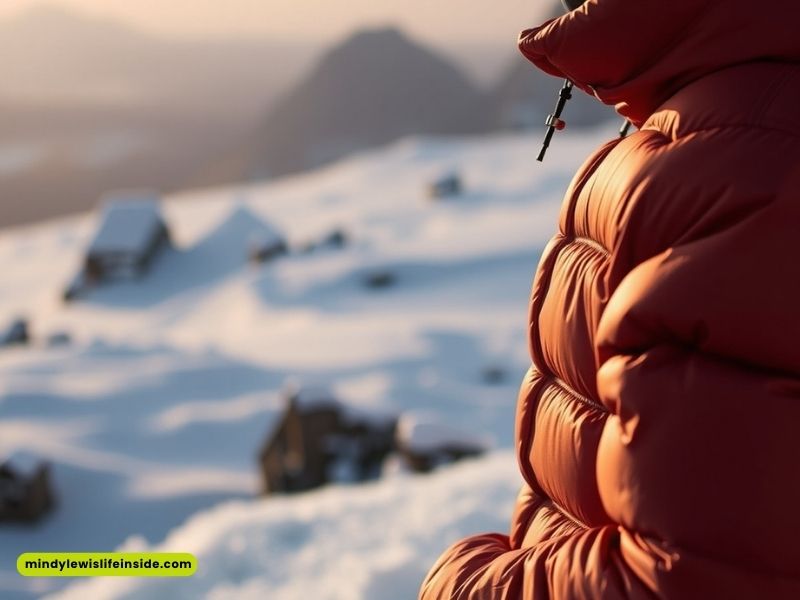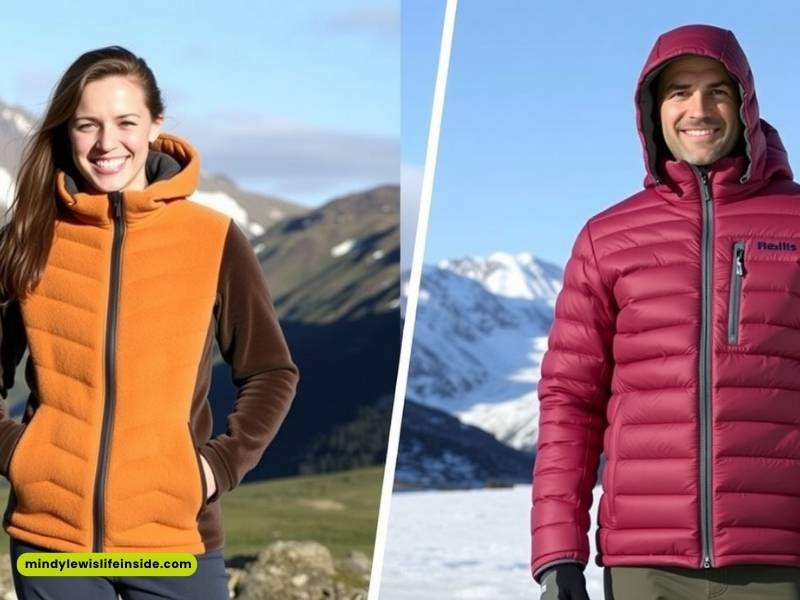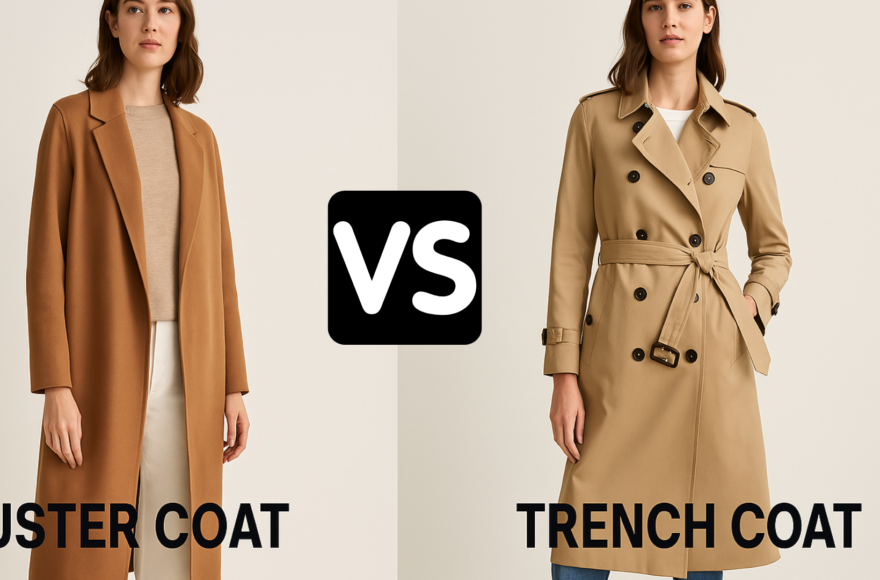Fleece vs Down Jacket: Which One Actually Keeps You Warm?

As an Amazon Associate, I earn from qualifying purchases
Fleece vs down jacket – I get this question every single time someone’s about to drop serious money on outdoor gear. Here’s the thing. I’ve been through more jackets than I care to admit.
And I’ve learned the hard way that picking the wrong one can make or break your entire outdoor experience.
The Real Problem Nobody Talks About
Most people walk into shops and get overwhelmed by sales chat. “This has 800 fill power down!” “This fleece has moisture-wicking technology!” But what does that actually mean for you when you’re standing on a mountain at 6 am and it’s absolutely freezing?
I’m going to break down everything you need to know. No fluff. Just the stuff that matters.
What’s the Actual Difference Between Fleece and Down?
Let me make this simple. Fleece jackets are made from synthetic polyester fibres. Think of it as engineered warmth. Down jackets are stuffed with duck or goose feathers.
The fluffy bits under their outer feathers, to be precise. That’s literally it. But the way they keep you warm is completely different.
Down Jackets: Nature’s Insulation
Down works by trapping air in tiny pockets. The more loft (fluffiness), the more warm air it holds. The more warm air, the warmer you stay. It’s like having thousands of tiny sleeping bags wrapped around your body.
Fill power is what determines how good the down is. 550-650 fill power gives you decent warmth. 700+ fill power means proper cold weather protection. 800+ fill power is expedition-level insulation.
Fleece Jackets: Synthetic Warmth
Fleece traps air too, but differently. The synthetic fibres create millions of tiny air pockets. Less efficient than down, but way more consistent. Rain hits fleece? Still works. Rain hits down? You’re in trouble.
When Down Jackets Actually Make Sense
I’ll be straight with you. Down jackets shine in specific situations.

Proper cold weather below 5°C means you need maximum warmth for minimum weight. Nothing beats down for pure insulation per gram. Dry conditions are essential because down hates moisture like cats hate water. Keep it dry and it’ll keep you toasty.
When pack space matters, down compresses to nothing. I can stuff my down jacket into a space smaller than a football. Standing around in the cold is where down excels. Not moving much? Down’s your friend. It’s like wearing a duvet.
When Fleece Jackets Are Actually Better
Here’s where most people get it wrong. Fleece isn’t just “budget down.” It’s better in loads of situations.
Active pursuits like hiking uphill mean fleece breathes, whilst down will turn you into a sweaty mess. Unpredictable weather (basically British weather) is where fleece handles light rain and still insulates when damp.
Easy maintenance means chuck it in the washing machine, whilst down jackets need special care or they’re ruined. Daily wear makes fleece more durable for regular use without leaking feathers all over your car.
The Money Talk: What You’ll Actually Pay
Let’s be real about costs. A decent fleece jacket will set you back £40-120. Proper down jacket starts at £150 and go up to £400+. That’s not a typo.
Good down is expensive because quality down is rare, processing is complex, and performance is unmatched in dry, cold conditions. Fleece is cheaper because it’s synthetic and easier to make.
My Personal Experience: What Actually Works

I own both. My fleece jacket comes everywhere for dog walks, quick hikes, layering under waterproofs, and when I might get caught in drizzle. My down jacket comes for proper cold camping, winter mountaineering, when I know it’ll stay dry, and standing around at football matches in January.
The Layering Game-Changer
Here’s what nobody tells you. The best setup isn’t fleece OR down. It’s fleece AND down. Base layer, then fleece mid-layer, then down jacket, then waterproof shell. This system handles everything the British weather throws at you.
Durability: What Actually Lasts
Fleece durability means tough as nails, handles abuse, pills over time but still works, and lasts years with basic care. Down durability means the shell tears easily, loses feathers naturally, is expensive to repair, and needs careful handling. I’ve had fleece jackets survive things that would destroy down jackets.
The Breathability Factor
This is huge if you’re active. Fleece breathability is excellent because sweat escapes easily and you stay comfortable during activity. Down breathability is poor to average because sweat gets trapped and you overheat quickly during exercise. If you’re hiking uphill, fleece wins every time.
Packability: Space in Your Bag
Down packability is outstanding because it compresses to tiny size, which is essential for backpacking. Fleece packability is bulky, takes up serious bag space, fine for day trips but annoying for long hauls.
Weather Protection: The Reality Check
Neither fleece nor down jackets are waterproof. Let me repeat that. Neither is waterproof.
Fleece in rain is water-resistant to light drizzle, dries quickly, and still insulates when damp. Down in the rain gets soggy fast, loses all insulation when wet, and takes forever to dry. For proper rain protection, you need a waterproof shell over either.
Maintenance: The Hassle Factor
Fleece maintenance means machine wash, tumble dry, no special products needed, and it’s pretty much indestructible. Down maintenance requires special down wash only, a specific drying process, tennis balls in the dryer (seriously), and one mistake ruins the jacket. I’ve seen too many people ruin expensive down jackets in regular washing machines.
Environmental Impact: The Uncomfortable Truth
Both have issues. Fleece problems include being made from petroleum products, shedding microplastics when washed, and not biodegrading.
Down problems include animal welfare concerns unless certified ethical, processing uses chemicals, and shell materials are synthetic anyway. Look for recycled materials and ethical certifications if this matters to you.
The Style Question
Let’s be honest. Down jackets look more “technical” and trendy. Fleece jackets can look a bit “dad on a walking holiday.” But style shouldn’t trump function. Pick what works for your actual use.
My Recommendations: What to Actually Buy
Patagonia Better Sweater is classic and reliable. Arc’teryx Atom Vest offers versatile layering. Uniqlo Heattech Fleece is a budget option that works.
Patagonia Down Sweater is an all-around winner. Rab Microlight Alpine handles serious mountain use. Uniqlo Ultra Light Down is a budget packable option.
When to Choose What: The Simple Decision Tree
Choose fleece if you’re active outdoors, the weather is unpredictable, you want low maintenance, your budget is tight, or you need something for daily use.
Choose down if you need maximum warmth, conditions are cold and dry, pack space is limited, you’re standing around in cold weather, or money isn’t the main concern.
Common Mistakes I See People Make
Mistake 1 is buying down for British weather when most UK conditions suit fleece better. Down excels in proper cold, dry conditions. Mistake 2 is expecting waterproof performance when neither type is waterproof, and you need a separate rain layer.
Mistake 3 is ignoring breathability when active people need breathable insulation because down will cook you during exercise. Mistake 4 is buying cheap down jackets when poor-quality down is worse than good fleece. Either buy proper down or stick with fleece.
The Sizing Game
Fleece sizing should fit for layering underneath other jackets. Not too tight, not too loose. Downsizing needs room for the insulation to loft properly. Too tight equals compressed down equals less warmth. Both should allow arm movement without restriction.
FAQs: The Questions Everyone Actually Asks
Can I wash my down jacket at home?
Technically, yes, but it’s risky. Use a down-specific detergent and dry with tennis balls. Easier to pay for professional cleaning.
Do fleece jackets lose warmth over time?
Not really. They might pill and look tired, but insulation stays consistent.
Which is better for running in winter?
Fleece, hands down. Down will overheat you in minutes.
Can I use either as a base layer?
Fleece can work as a mid-layer. Down jackets are too puffy for layering underneath other clothing.
What about synthetic insulation jackets?
They’re like fleece’s technical cousin. Better than fleece in some ways, but more expensive. Consider them if the budget allows.
How long should each type last?
Fleece lasts 5-10 years with regular use. Down lasts 10+ years if you treat it properly.
Which packs smaller for travel?
Down wins massively. Some down jackets pack into their own pocket.
Can I repair tears easily?
Fleece works fine with basic sewing. Down needs proper patching to prevent feather loss.
The Bottom Line: What Actually Matters
Here’s what I’ve learned after years of testing both. Most people overthink this decision. If you’re active outdoors in changeable weather, fleece wins. If you need maximum warmth in consistently cold, dry conditions, down wins.
If you can only afford one, get a good fleece jacket. It’ll handle 80% of situations and won’t stress you out with maintenance. Save up for down when you have specific cold-weather needs.
As an Amazon Associate, I earn from qualifying purchases









